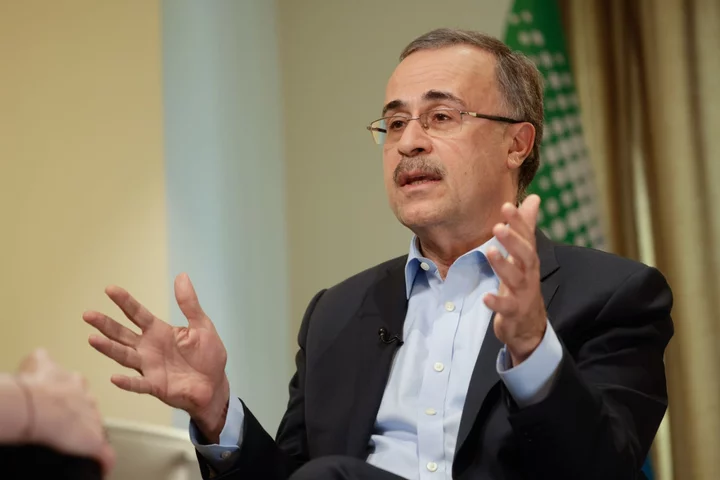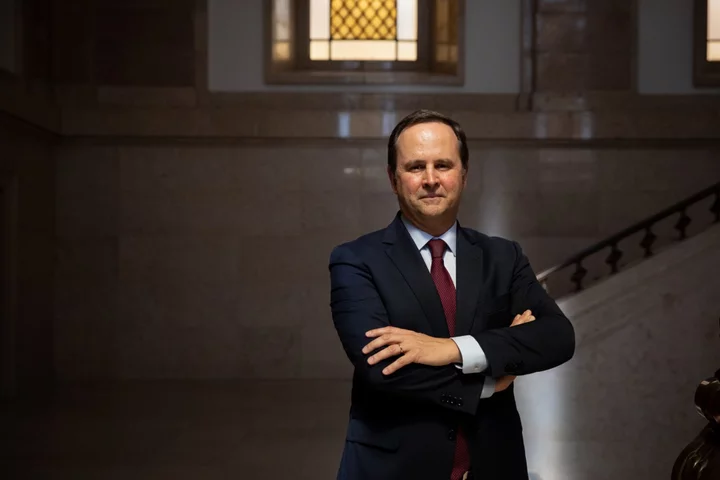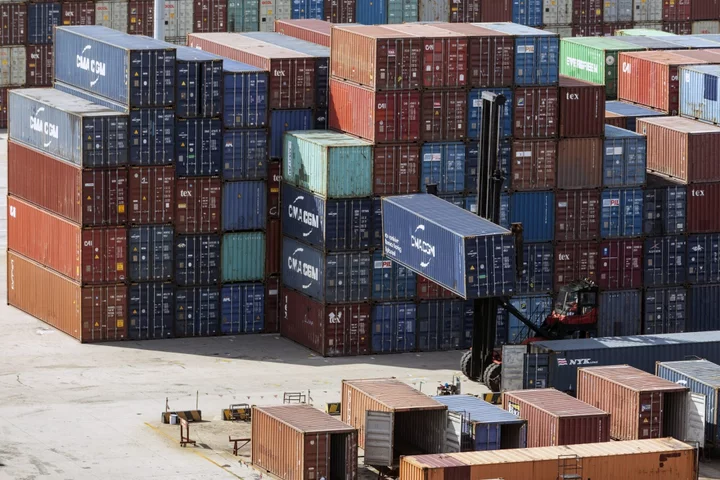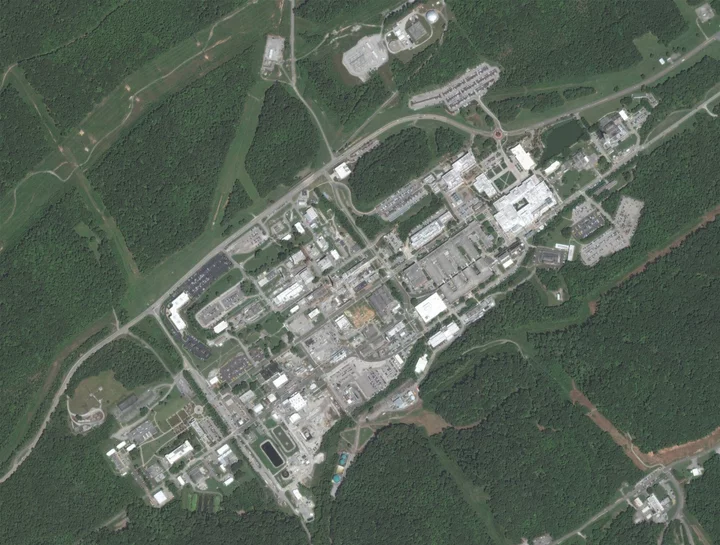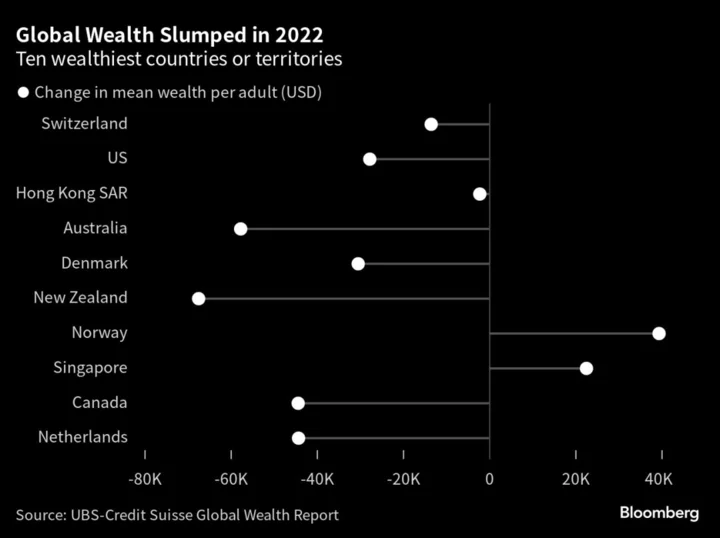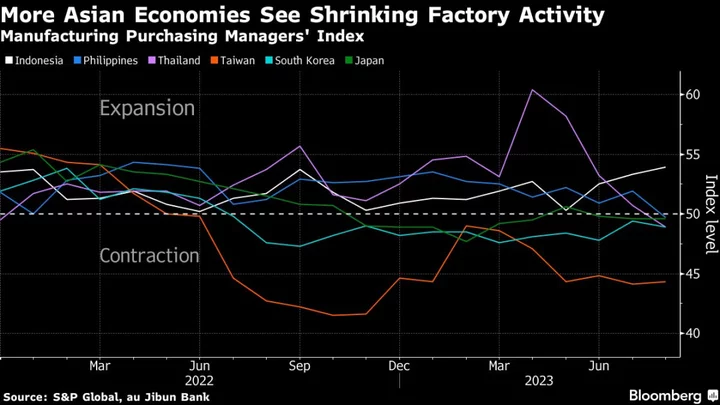Saudi Aramco, the world’s largest oil company, has become an unlikely beneficiary of funds earmarked for sustainable investments thanks to a complex web of financial structures it used to raise money from its pipelines.
Aramco doesn’t appear to have set out to tap cash originally intended for environmental, social and good governance goals when it started a process to raise $28 billion in 2021. But the fact that ESG investors ended up playing a role in the capital raise of a fossil-fuel behemoth raises questions about a playbook that’s increasingly being used in the Gulf.
Amin Nasser, the chief executive of Saudi Aramco, which declined to comment for this story, has criticized ESG in the past. In February, he told investors gathered in Riyadh that ESG-driven policies that have “an automatic bias against any and all conventional energy projects” will result in underinvestment with serious implications for the global economy, energy affordability and energy security.
The unlikely tie-up between Aramco and ESG began with the creation of two subsidiaries — the Aramco Oil Pipelines Company and the Aramco Gas Pipelines Company. Aramco sold 49% of the shares in each unit to consortiums led by EIG Global Energy Partners LLC and BlackRock Inc., respectively. These investors used bridge loans from banks to fund those transactions.
In order to generate cash to repay the bank loans, the EIG and BlackRock consortiums created two special purpose vehicles: EIG Pearl Holdings and GreenSaif Pipelines Bidco, both registered at the same Luxembourg address. These SPVs then sold bonds, which, since they had no direct links to the fossil-fuel industry, ended up getting an above-average score in a widely-used JPMorgan Chase & Co. sustainability screening based on third-party ESG scores. From there, the bonds made their way into JPMorgan’s ESG indexes, which are cumulatively tracked by about $40 billion of assets under management. Investors in the SPV bonds include funds managed by UBS Group AG, Legal & General Investment Management and the investment arm of HSBC Holdings Plc.
Ulf Erlandsson, founder and chief executive officer of the Anthropocene Fixed Income Institute, who has researched the pipeline deals, says it’s likely that Aramco’s motivation was to try to access the cheaper capital available in opaque private markets. But the existence of such complex financial structures creates a problem for investors who want to be sure that by investing in an ESG fund, their money is going into climate-friendly firms. “Some ESG investors have invested in these package deals, even though it seems unlikely that they would have bought the oil and gas companies’ bonds on a stand-alone basis,” Erlandsson said.
Without intervention, even more of these securities could soon end up in the ESG indexes. Analysts at Morgan Stanley estimate that the SPVs need to issue around another $15 billion of debt in order to continue financing the Aramco pipelines.
Spokespeople for EIG, BlackRock, JPMorgan, LGIM and UBS declined to comment. A spokesperson for HSBC Asset Management confirmed the firm holds the SPV bonds without commenting further. Maria Lozovik, a London-based Bank of America investment banking veteran who founded Marsham Investment Management in 2016, says part of the problem is that ESG rating calculation methodologies are “often not transparent and face data gaps, which have to be filled by estimates.” Investors in ESG-labeled exchange-traded funds need to “conduct thorough due diligence into what they’re actually investing in,” she said.Some actively-managed ESG funds have also bought the bonds, according to data reviewed by Bloomberg. They include the BlackRock Sustainable Asian Bond Fund, which owns Greensaif debt, and the £1.2 billion BlackRock Global Corporate ESG Insights Bond fund, which holds EIG Pearl debt. Dramatic OverhaulRegulators are now starting to look more closely at holes and inconsistencies in the ESG ratings market. In June, the European Commission — the European Union’s executive arm — unveiled a sweeping proposal to dramatically overhaul the ESG ratings industry with goals that include breaking up financial conglomerates that provide ESG scores along with other services, and forcing providers to publish their methodologies. Companies that fail to comply will face hefty fines. Aramco has announced plans to cut emissions, but expects them to rise in the medium-term. Most ESG ratings firms give the company very low scores, which is why it is generally blacklisted by ESG funds. Sustainalytics, an ESG data provider used by JPMorgan to construct its indexes, assigns Aramco a “severe” ESG risk warning, which is worse than more than 95% of the entities it tracks. Bloomberg LP, the parent of Bloomberg News, also provides ESG rankings: its current score for Aramco indicates the firm is underperforming peers.
Sustainalytics rates the EIG Pearl vehicle as having low ESG risk, putting it in the top 20% of entities covered. EIG Pearl “is not independently covered in our universe because it is an SPV” and “ the ability to comprehensively research such entities is limited,” Shiva Mitra, an ESG research lead analyst at Sustainalytics, said in a written response to questions. Therefore, such vehicles are typically covered through their parent companies, he said. The SPV ratings of RepRisk, another ESG data provider used by JPMorgan, are also based on the parent company, according to a spokesperson. “RepRisk is clear about the purpose of its data and uses a rules-based and consistent methodology which is transparent and available to its clients and the public,” said a spokesperson for the firm, which doesn’t make its reports publicly available.
The Details...
- JPMorgan Chase & Co. constructs its ESG indexes using a model that grades and ranks issuers’ sustainability profiles. It uses scores from external data providers Sustainalytics and RepRisk to divide issuers into quintiles.
- The SPVs used to finance the Aramco oil and gas pipelines sit in the second-highest quintile, according to proprietary index data reviewed by Bloomberg. Aramco itself, meanwhile, falls into the lowest quintile and is therefore blacklisted from the index.
- The ESG scores are based on data that doesn’t span the entire financing chain, and therefore don’t reflect Aramco’s involvement.
The Aramco financing structure was made possible by its use of a so-called lease and lease-back arrangement for the oil and gas pipeline subsidiaries. The newly created units got access to Aramco’s pipeline networks through a leasing contract and then gave Aramco the exclusive right to use the network by leasing it back.Other Gulf companies have benefited from similarly complex structures, though not on the same financial scale as Aramco. Pascal N. Bode, a fixed-income strategist at Morgan Stanley, said such structures are becoming “relatively standardized” for Gulf Cooperation Council pipeline deals. Abu Dhabi National Oil Company raised $10 billion through a transaction involving Global Infrastructure Partners, Brookfield Asset Management Inc. and Singapore’s sovereign wealth fund in 2020.
That deal was refinanced by investors using bonds issued through an SPV that was registered in Jersey called Galaxy Pipeline Assets Bidco Ltd. The bonds are held in ESG funds run by asset managers including L&G Group Plc and Goldman Sachs Group Inc. A spokesperson for Goldman declined to comment. An ADNOC spokesperson was not immediately available for comment. For climate activists, the fact that major carbon emitters and ESG are somehow ending up as bed-fellows exposes holes that urgently need to be closed. It’s also part of the reason why jurisdictions including the EU are currently working on a formal definition of greenwashing, in an effort to protect end investors from bogus ESG claims.
“It’s a huge loophole in how these ESG bond indexes are built,” said Lara Cuvelier, a campaigner at environmental nonprofit Reclaim Finance. “It’s a real problem that entities are included in such products that have close links to Saudi Aramco.”

